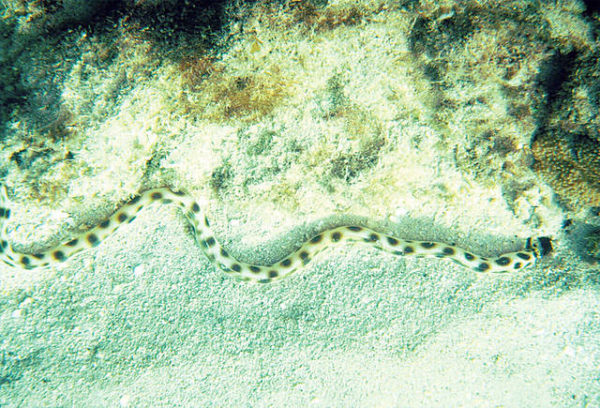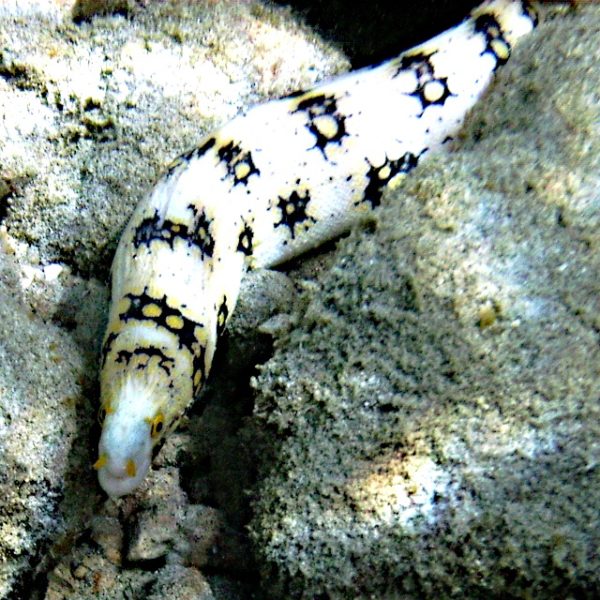Published in the Ocean Watch column, Honolulu Star-Advertiser © Susan Scott
August 12, 2017
I thought I knew my eels, but a recent news item in this newspaper, about a species called the American eel, left me blank.
The story was about the East Coast’s immature American eels, called elvers, wiggly little fish that are fetching up to $2,000 a pound, live, due to Asian aquaculture demands. Managers worry that such demand is jeopardizing the species.
Were baby eels named after elves? I wondered. Alas, no. The word is a merge of the 17th-century expression “eel fare,” meaning (at the time) eel journey.
 It’s easy to see why harmless snake eels, such as this one,
It’s easy to see why harmless snake eels, such as this one,
are mistaken for sea snakes. All eels are fish.
©2017 Susan Scott
The fish were well named.
As adults, American eels live in rivers, estuaries or marine coastal areas, eating insects, fish, fish eggs, crabs, worms, clams, frogs and dead animal matter, all at night. In the daytime, eels hide under rocks and logs.
Females grow to a whopping 5 feet long, and males to 3. Individuals live 15 to 20 years.
Old age for the American eel’s life is far from laid-back. When its biological clock sounds the alarm, the fish stops eating, its eyes double in size and the eel ships to sea.
This fish can breathe through its skin as well as its gills, allowing the eel to slink across wet grass and slither through mud. Mucous glands produce slime over the entire body, making the creature, well, slippery as an eel.
The eel’s destination is the Atlantic Ocean’s Sargasso Sea, a 2 million-square-mile area of warm water about 2,000 miles offshore.
It’s a one-way trip. Once there, each female releases 20 to 30 million eggs as males release sperm. Mission accomplished, the adults die.
Hatched eel eggs drift in the Gulf Stream for a year. When they reach the American coast, the transparent juveniles, 2 to 3 inches long, are called glass eels.
As the little fish head toward estuaries, swim up rivers and settle into coastlines, they turn gray-green. These 4-inchers, called elvers, are what Asian aquaculture farmers want for stock in a lucrative market for eels as food.
The American eel is the only freshwater species in North America, but Europe has a similar one, as does Japan. Dwindling stocks of those species have created poaching of American elvers along the U.S. East Coast.
Hawaii has no freshwater eels, but the reefs around us host so many marine species (42 morays, 12 congers and 17 snake eels) that I keep a separate email file just for “sea snake” sightings.
So far, only two were correct, both the yellow-bellied species that occasionally (but rarely) drifts our way on El Nino currents.
Photos are crucial for ID. A reader recently wrote, “I know you don’t think we have sea snakes in Hawaii, but believe me, I know my eels.” The blurry photo he sent was a snowflake moray.
